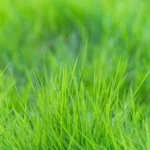
Mosses are group of fuzzy plants that belong to the division Bryophyta. There are around 12 000 species of moss that can be found throughout the world. Moss can survive in different habitats but it usually prefers shady areas of woodlands and forests that provide enough water. Moss can grow both on the trees and on the ground, but it can be also found on the rocks, under the water, on the clay…Even though mosses can adapt to various ecosystems, they are negatively affected by pollution and changes in environment that are result of increased human activity. These factors placed certain species of moss on the listed of endangered plants.
Moss was the first plant on earth. Algae adapted to life on earth evolving into lichen, liverworts and moss.
Mosses are tiny plants. Most mosses can reach 0.4 to 4 inches in height. Largest species are 20 inches tall.
Mosses live all over the world. There are over 10,000 species of moss worldwide.
Mosses are usually bright green in color. Some species can be pale green (almost white), bluish-green, yellowish-green or velvety black green.
Mosses tend to grow in moist places, but some species are drought tolerant and cold tolerant.
Unlike most other plants, mosses do not have vascular tissue (special kind of plant tissue that is used to transport water and nutrients through the plant). Because of that, mosses lack root, stem and flowers.
Mosses don’t have roots.
Mosses use structures called rhizoids (which look like miniature roots) to attach themselves to the ground.
Mosses are anchored to earth, rock, trees by rhizoids which look like tiny roots. The rhizoids are a thread like structure but don’t absorb water or nutrients.
Mosses produce energy (in the form of sugar) in the process of photosynthesis (production of food in the green part of the plant through absorption of sunlight and carbon dioxide).
Mosses get their nutrients from rainwater, dew, fog and sunlight. They may get nutrients from the top layer of soil, if they are touching it.
Mosses were the first plants that managed to survive on the solid ground. They evolved from algae.
Mosses don’t produce pollen, seeds or flowers. They reproduce via spores.
Mosses are able to absorb huge amount of water and prevent erosion of soil as a result of water runoff.
Mosses grow in a wider range of light exposures than other plants, from bright to dark.
Mosses were used as bandages during the First World War to prevent blood loss. Mosses were also used to soothe the infection since they contain chemical with anti-bacterial properties.
Mosses have been used over the centuries as pillow stuffing, wound dressing and diapers. It is not used as a human food to the best of my knowledge.
People used dried mosses for heating of the houses in the past. Live mosses were used to insulate boots in cold climates. Mosses are also very popular in gardening because they require low maintenance, tolerate periods of drought and visually improve beauty of the garden.
Mosses collectively provide more carbon offset than all the trees in the world.
Certain animals, such as reindeer, consume mosses because they contain chemical which warms the blood of animal.
Most animals don’t eat moss. It’s hard to digest, and it has little nutritional value.
Mosses are indicators of pollution. They can grow only in clean environments.
During the first World War, mosses were used as bandages. Moss has antiseptic properties, which was perfect to cleanse and heal the wounded over the course of the war.
Moss can stop its metabolism almost completely during the hot periods of the year when water is not available.
Earlier, mosses have even been used as diapers.
Life cycle of moss consists of two generations: sporophyte and gametophyte. Sporophyte generation produces spores that are spread by wind. Spores develop into gametophyte generation which produces male and female sex organs and ensures sexual reproduction.
Mosses collectively provide more carbon offset than all the trees in the world.
Moss lives near the water because male and female reproductive cells travel to each other and merge in the water.
Lifespan of moss depends on the species. It ranges from couple to 10 years.
FAQs about Moss
Q: What is moss?
A: Moss is a small, non-vascular, spore-producing plant that belongs to the Bryophyta division. Unlike flowering plants, mosses lack true roots, stems, and leaves. Instead, they have rhizoids (root-like structures for anchoring), simple leaves (often just a single cell layer thick), and a stem-like structure.
- Non-vascular: This means they don’t have specialized tissues (xylem and phloem) to transport water and nutrients. They absorb water and nutrients directly through their surfaces.
- Spore-producing: Mosses reproduce through spores, not seeds. They have a two-part life cycle: the gametophyte (the green, leafy part we typically see) and the sporophyte (the stalk with a capsule that releases spores).
- Ancient lineage: Mosses are among the oldest land plants, playing a crucial role in early terrestrial ecosystems.
Q: Where does moss grow?
A: Moss can grow in a wide variety of environments, from forests and wetlands to deserts and even urban areas. They thrive in:
- Damp, shady areas: This is their most common habitat, as they require moisture for survival and reproduction.
- Acidic soils: Many moss species prefer acidic conditions.
- On various surfaces: Moss can grow on soil, rocks, tree bark, concrete, and even rooftops.
- High humidity regions: Locations with consistent moisture favor moss growth.
- Specific Microclimates: Moss is very sensitive to microclimates, so even within a backyard, different moss species may thrive in different spots.
Q: How does moss reproduce?
A: Moss reproduction involves a two-stage life cycle:
- Gametophyte stage: This is the dominant, green, leafy stage. It produces gametes (sperm and eggs).
- Sporophyte stage: When sperm and egg unite, a sporophyte grows. It consists of a stalk (seta) and a capsule. The capsule contains spores.
- Spore dispersal: When spores mature, the capsule opens, and wind or water disperses them.
- New gametophyte growth: If a spore lands in a suitable environment, it germinates and grows into a new gametophyte.
- Vegetative reproduction: Mosses can also reproduce vegetatively through fragmentation. Pieces of the gametophyte can break off and grow into new plants.
Q: Is moss harmful?
A: Generally, moss is not harmful. However, it can cause some issues:
- Slippery surfaces: Moss can make surfaces like rocks, sidewalks, and roofs slippery, posing a safety hazard.
- Roof damage: Excessive moss growth on roofs can trap moisture, potentially leading to rot or damage to roofing materials.
- Lawn competition: In lawns, moss can compete with grass for nutrients and water, especially in shady or damp areas.
- Aesthetic concerns: Some people find moss undesirable in their gardens or lawns.
- Beneficial aspects: Moss also has many beneficial attributes. It can act as a soil stabilizer, prevent erosion, and provide habitat for small organisms.
Moss in Gardens and Lawns:
Q: How do I get rid of moss in my lawn?
A: To eliminate moss from your lawn, address the underlying causes:
- Improve drainage: Aerate the soil, remove thatch, and consider adding drainage systems.
- Increase sunlight: Trim trees or shrubs to allow more sunlight to reach the lawn.
- Adjust soil pH: Test the soil and add lime if it’s too acidic.
- Improve soil fertility: Fertilize the lawn to promote healthy grass growth.
- Use moss killers: Iron sulfate or ferrous ammonium sulfate-based moss killers can be effective. Follow product instructions carefully.
- Rake out dead moss: After applying a moss killer, rake out the dead moss.
- Overseed with grass: Fill in bare spots with grass seed to prevent moss from returning.
Q: How do I grow moss in my garden?
A: To cultivate moss in your garden:
- Choose the right location: Select a shady, damp area with acidic soil.
- Prepare the surface: Clean the surface and ensure it’s free of debris.
- Source moss: Obtain moss from a reputable nursery or transplant it from another area of your property.
- Plant the moss: Press the moss firmly onto the surface and keep it moist.
- Maintain moisture: Mist the moss regularly, especially during dry periods.
- Acidify the soil: If necessary, use soil amendments to lower the pH.
- Avoid fertilizers: Moss doesn’t require fertilizer and can be harmed by it.
- Use a blender method: for larger areas, moss can be blended with buttermilk, or plain yogurt and water, then painted or sprayed onto the desired surface.
Q: What are the benefits of having moss in a garden?
A: Moss can enhance a garden in several ways:
- Aesthetic appeal: Moss adds a lush, green, and natural look to gardens.
- Ground cover: It can fill in bare spots and create a soft, textured surface.
- Erosion control: Moss helps stabilize soil and prevent erosion.
- Moisture retention: It retains moisture, reducing the need for frequent watering.
- Habitat for beneficial insects: Moss provides shelter and habitat for small insects and other organisms.
- Natural look: Moss gardens are very popular in Japanese style gardens.
Moss on Roofs:
Q: How do I remove moss from my roof?
A: Removing moss from a roof requires caution to avoid damage:
- Use a soft brush: Gently brush off loose moss.
- Apply a moss killer: Use a zinc sulfate or copper sulfate-based moss killer, following product instructions.
- Install zinc or copper strips: These strips release metal ions that inhibit moss growth.
- Professional cleaning: Consider hiring a professional roof cleaner for difficult or extensive moss growth.
- Never use a pressure washer: High-pressure washing can damage roofing materials.
Q: How do I prevent moss from growing on my roof?
A: To prevent moss growth on your roof:
- Trim overhanging trees: Reduce shade and increase sunlight.
- Install zinc or copper strips: These strips prevent moss growth.
- Regular roof inspections: Inspect your roof regularly and remove any moss growth promptly.
- Keep gutters clean: Ensure gutters are free of debris to prevent moisture buildup.
- Choose moss-resistant roofing materials: Some roofing materials are more resistant to moss growth.
Moss in Terrariums:
Q: What kind of moss is best for a terrarium?
A: Several moss species thrive in terrariums:
- Sheet moss (Hypnum spp.): A common and versatile moss.
- Pillow moss (Leucobryum glaucum): Forms dense, cushion-like mounds.
- Mood moss (Dicranum scoparium): Adds a soft, textured look.
- Fern moss (Thuidium delicatulum): Has delicate, fern-like fronds.
- Sphagnum moss (Sphagnum spp.): While often used as a substrate, living sphagnum can also be a beautiful addition.
Q: How do I care for moss in a terrarium?
A: Terrarium moss care involves:
- Maintaining moisture: Mist the moss regularly to keep it consistently moist.
- Providing indirect light: Place the terrarium in a location with bright, indirect light.
- Ensuring ventilation: Allow for some air circulation to prevent mold growth.
- Using distilled or rainwater: Avoid tap water, which can contain minerals that harm moss.
- Removing dead moss: Promptly remove any dead or decaying moss to prevent disease.









